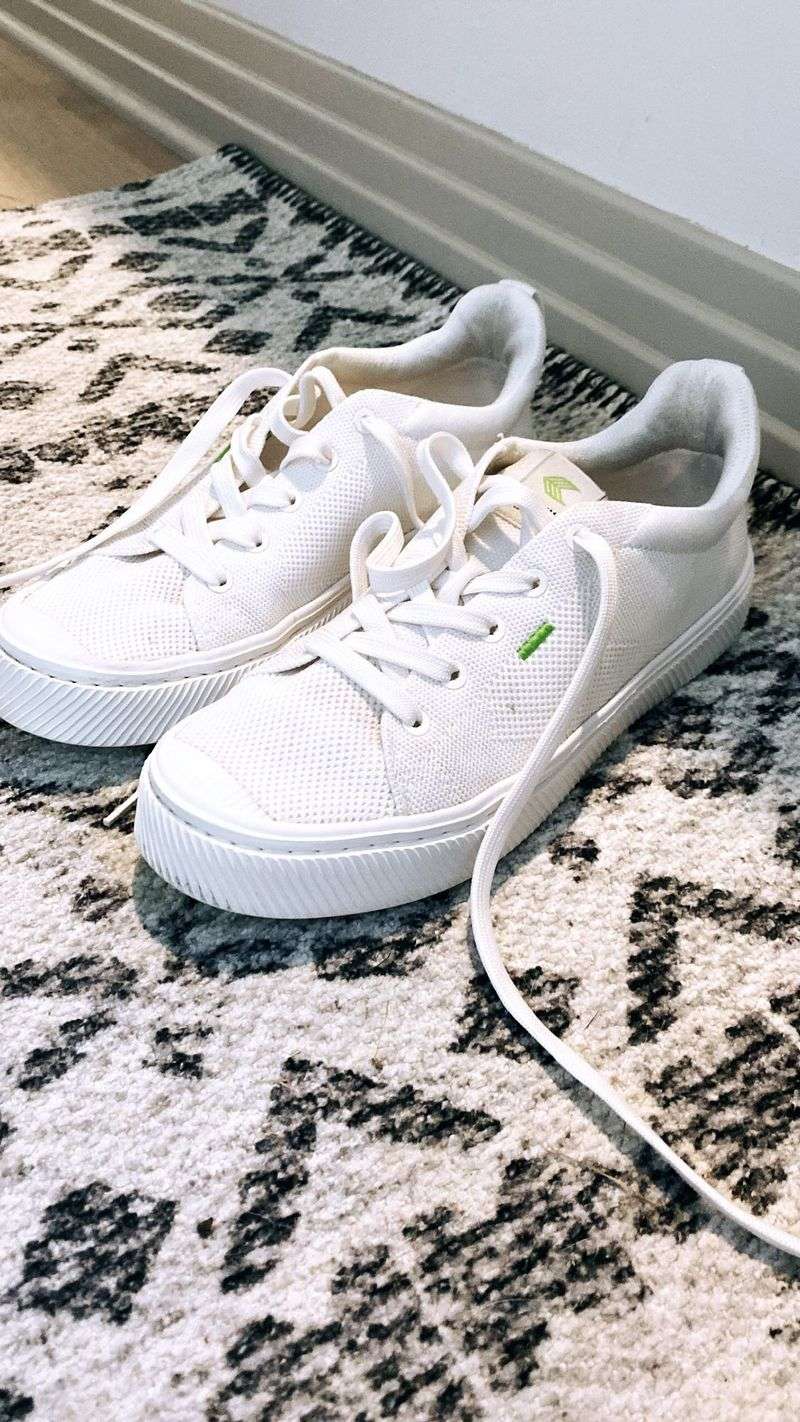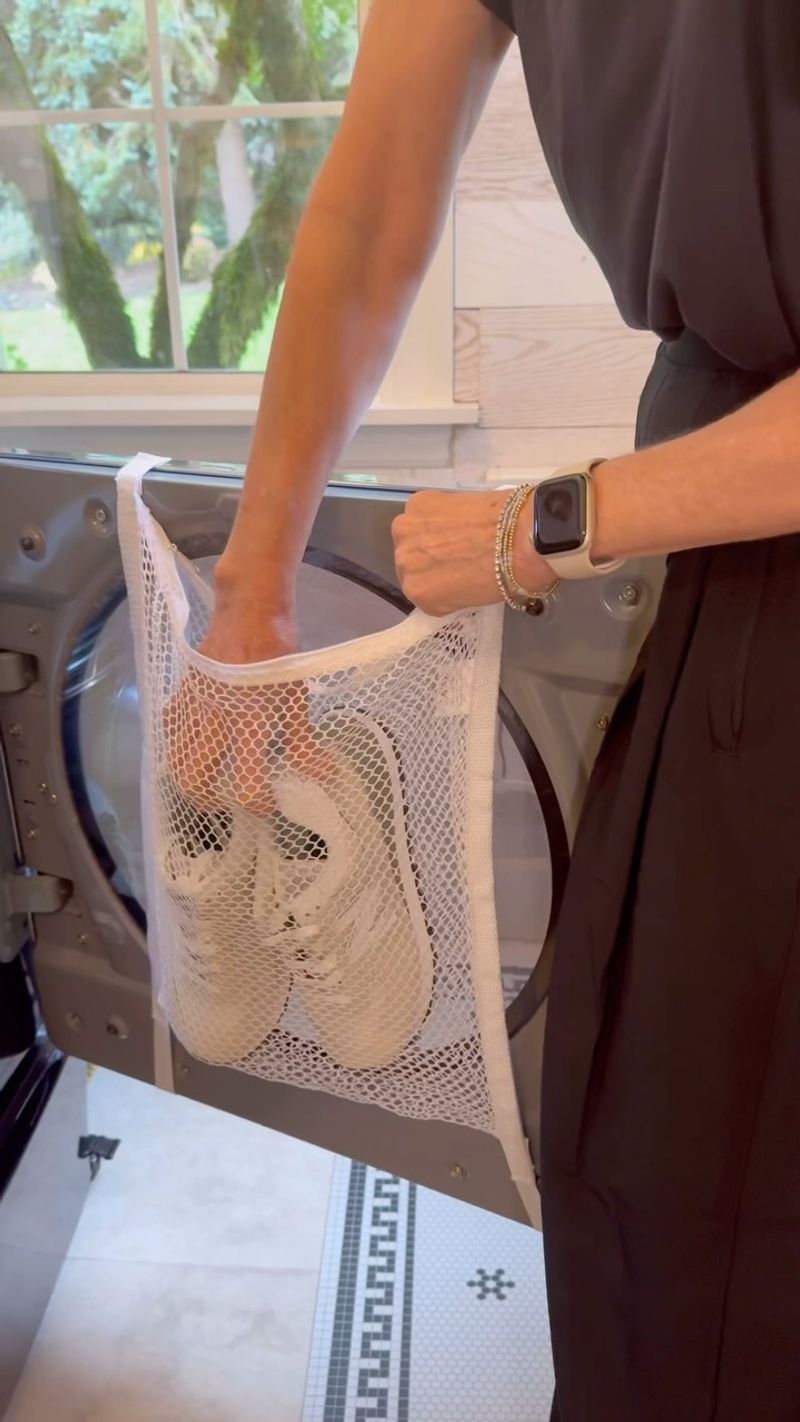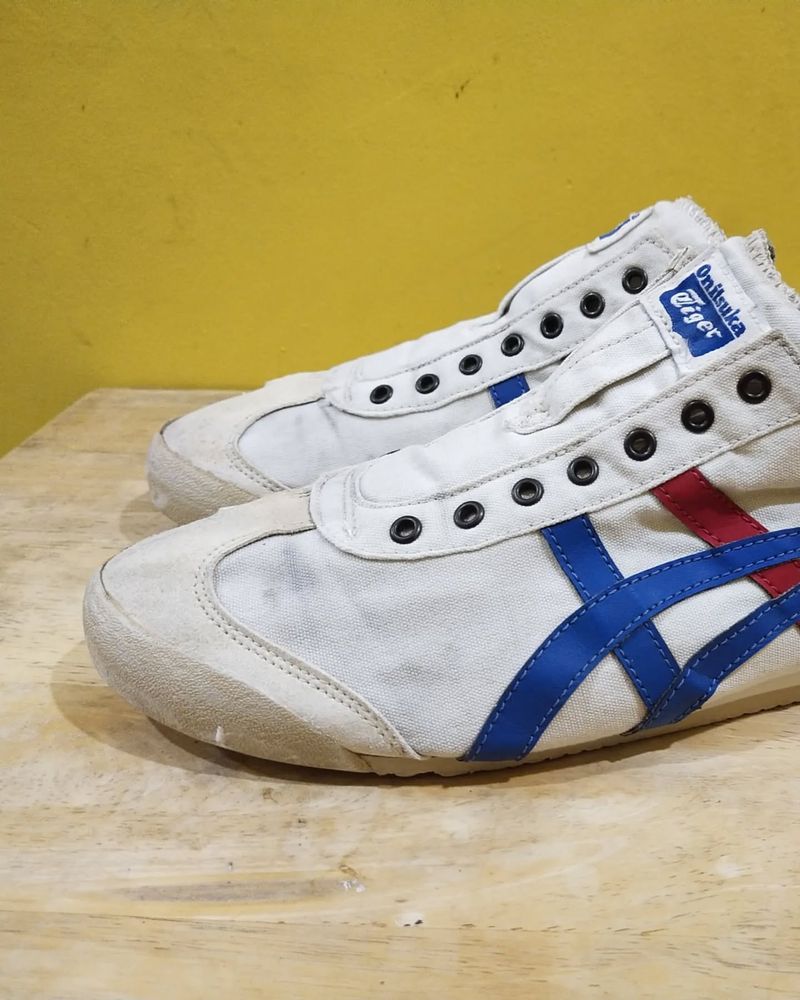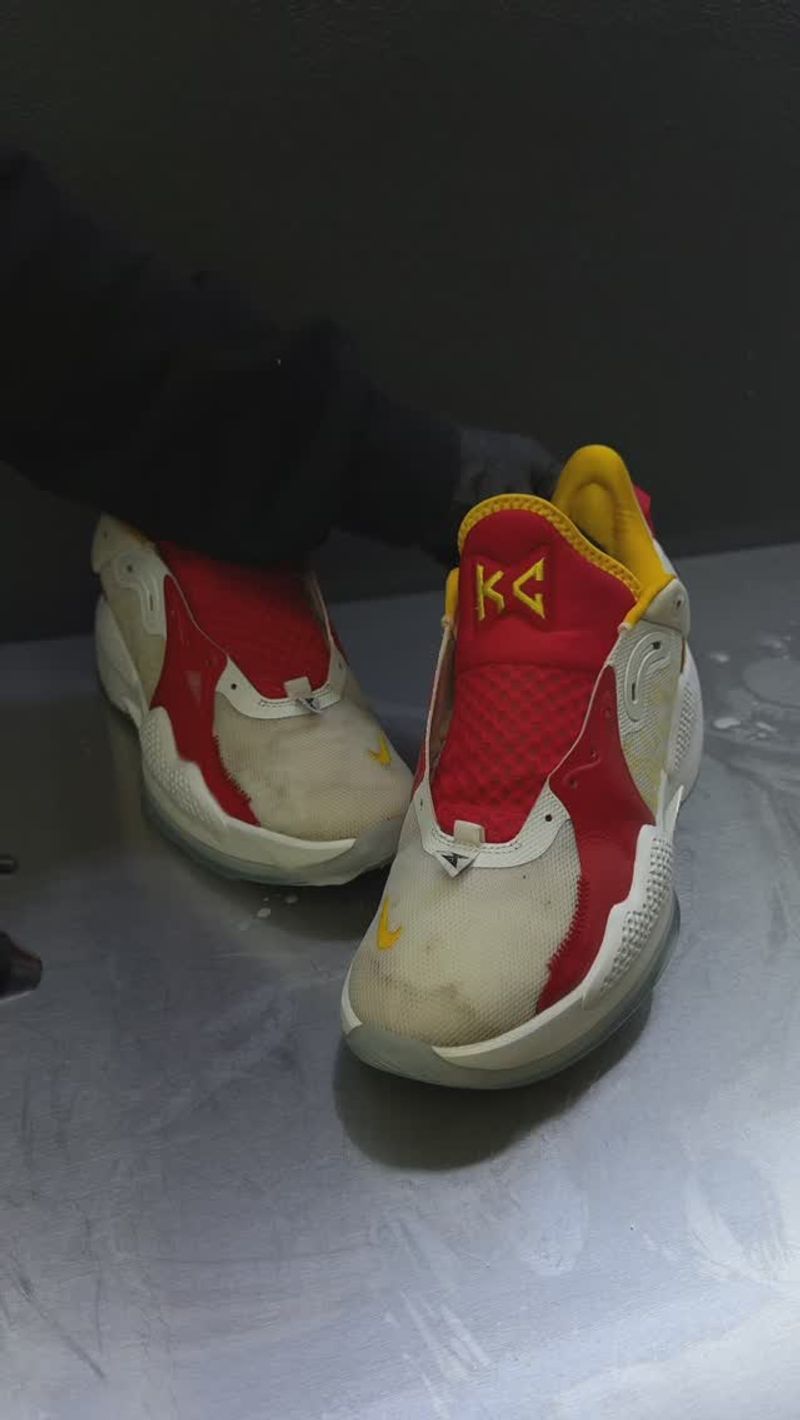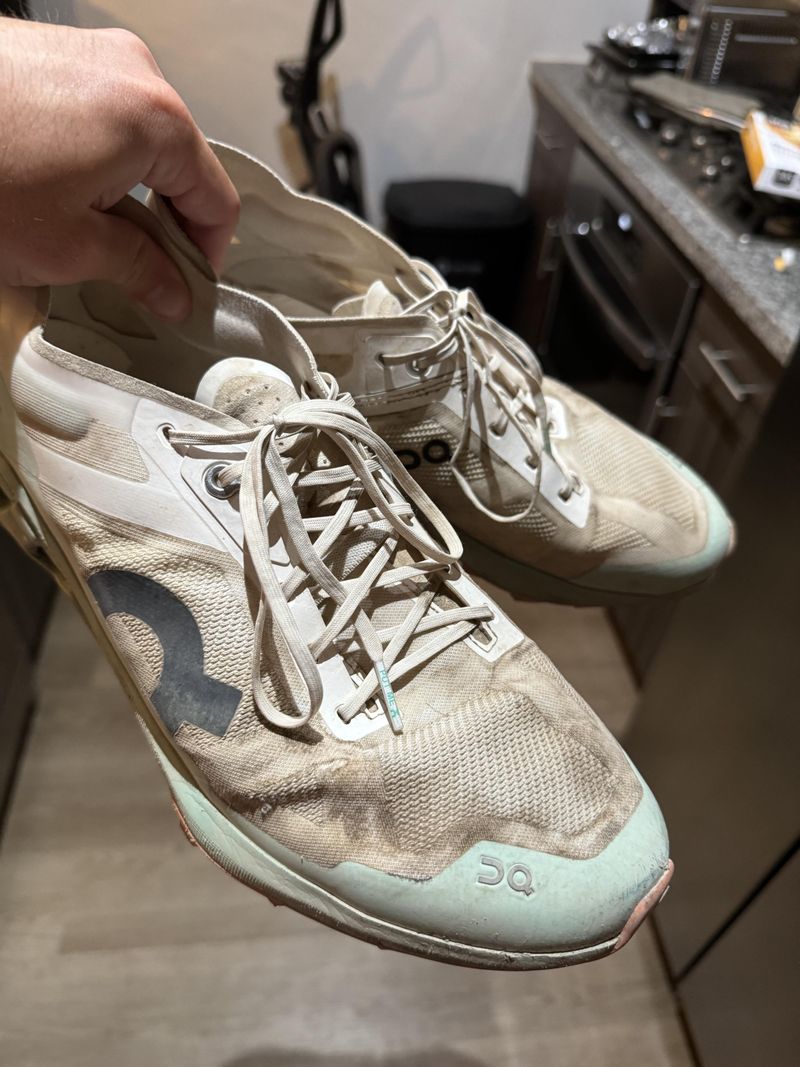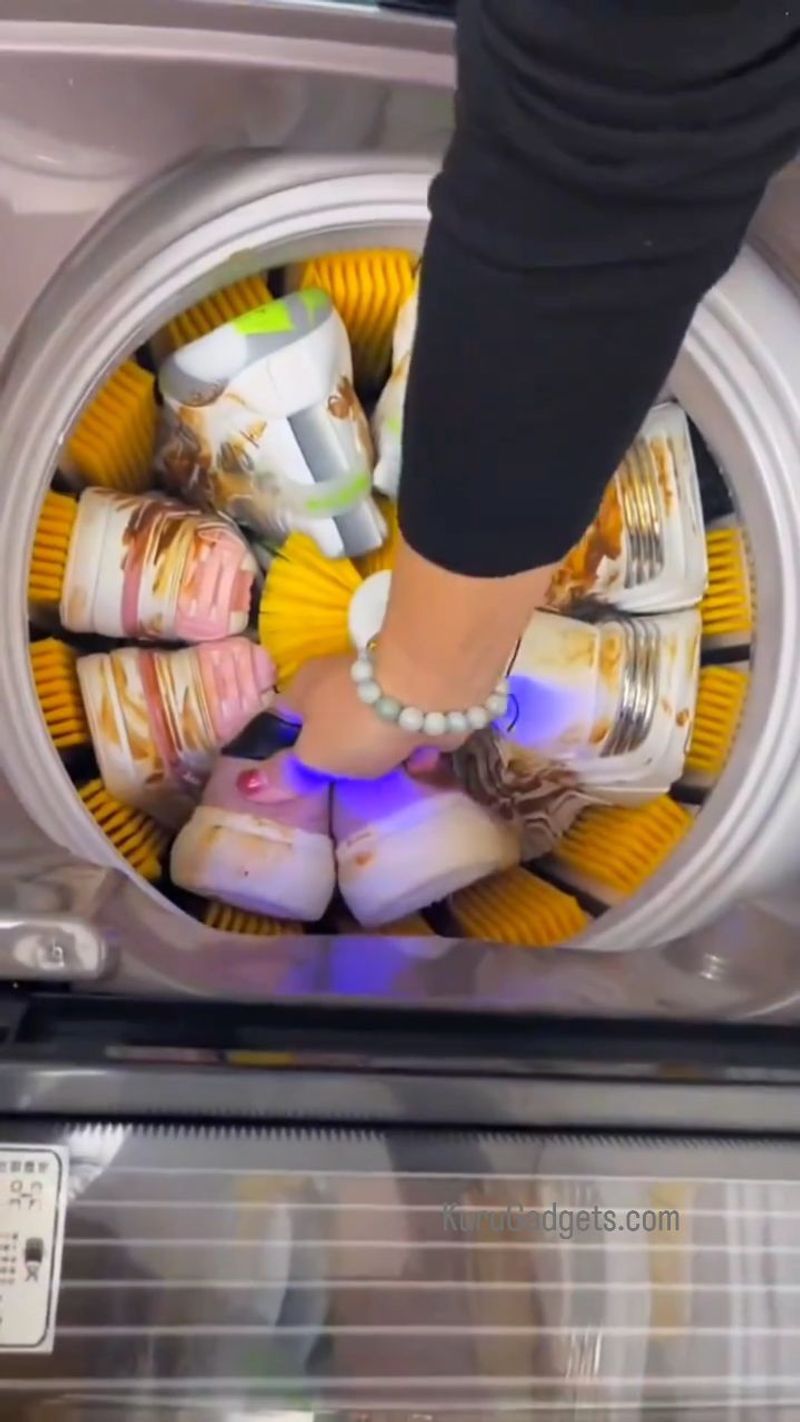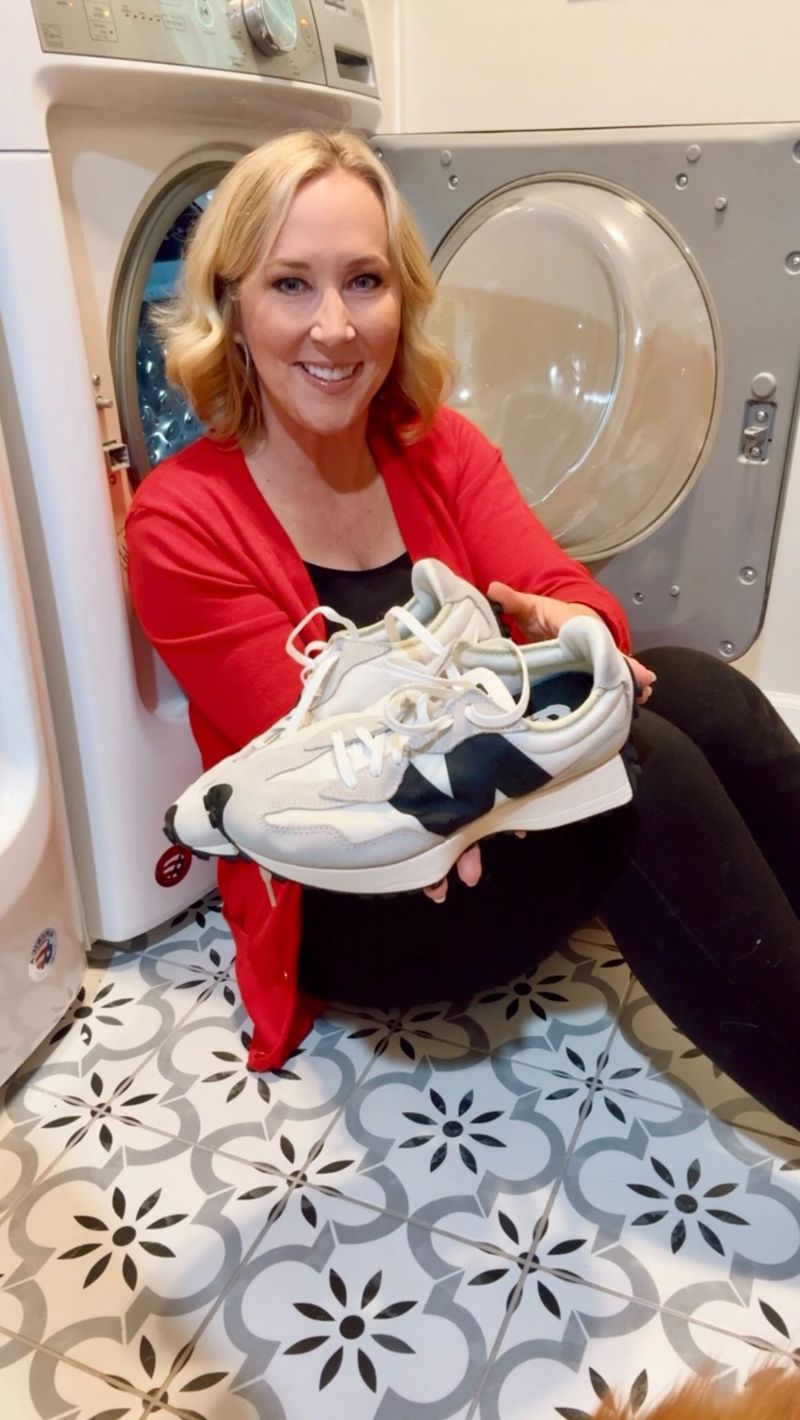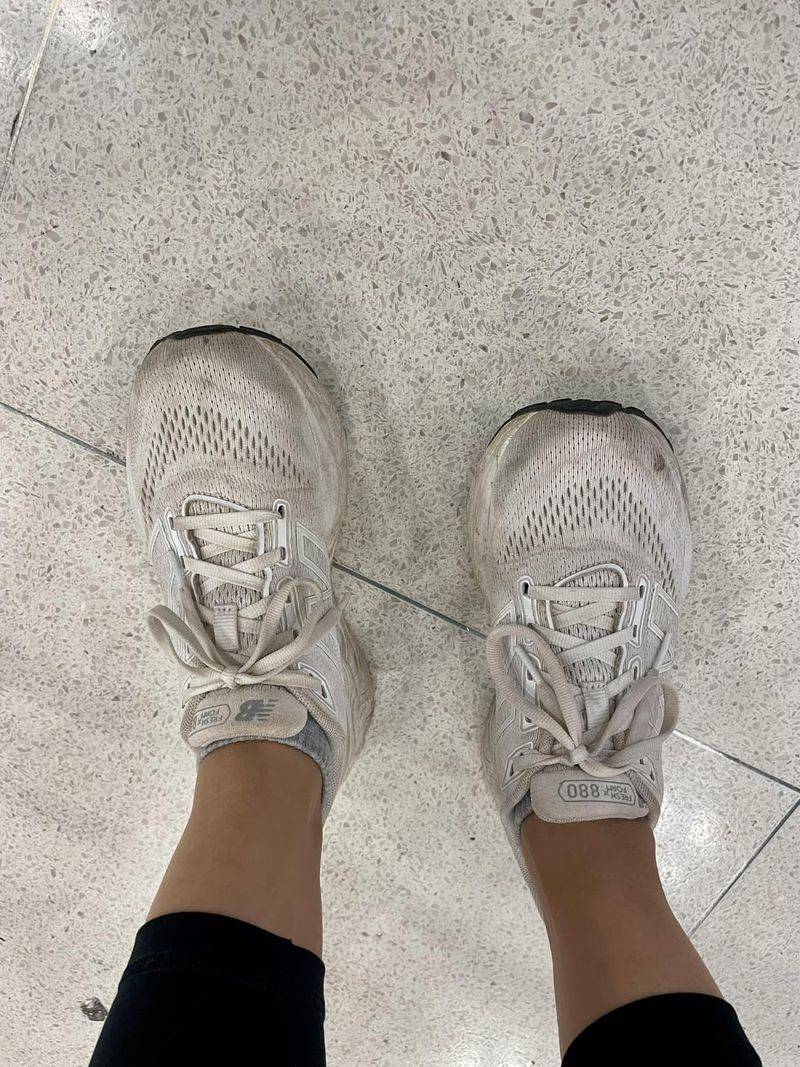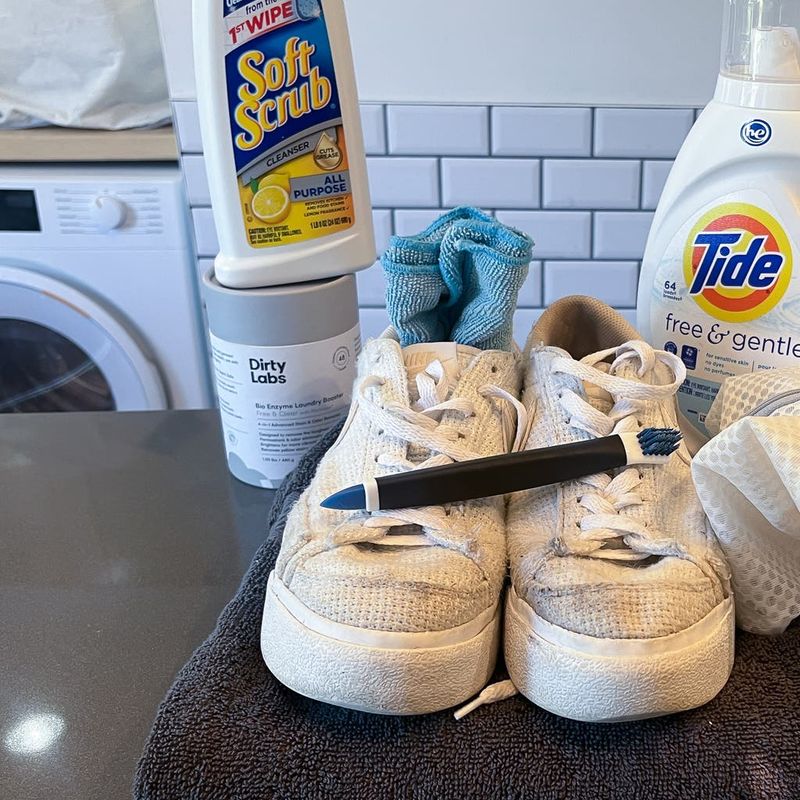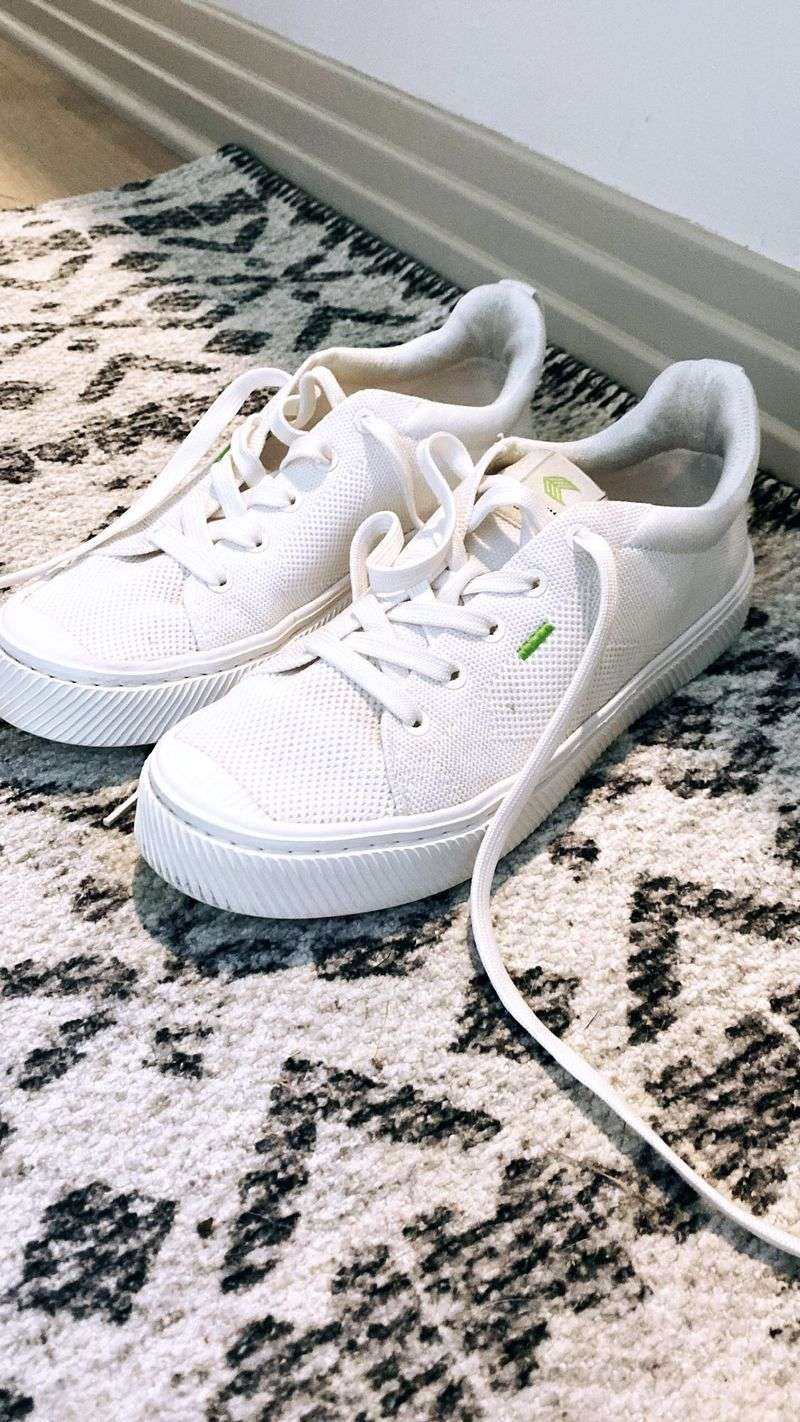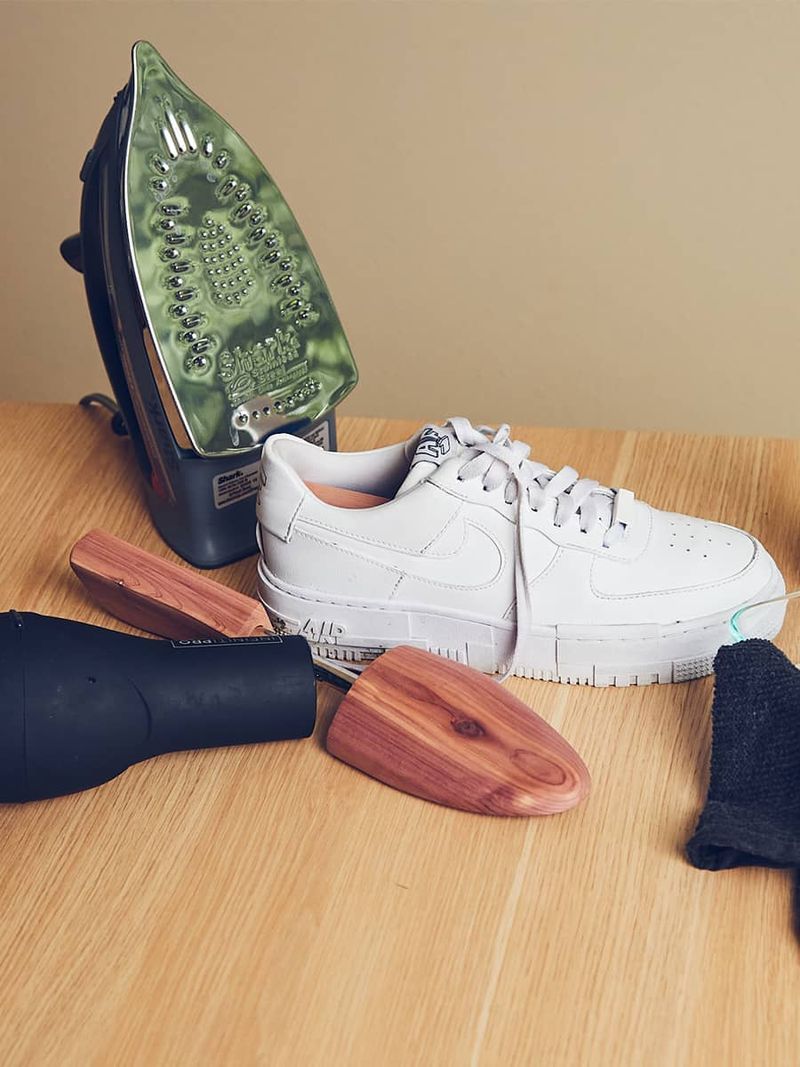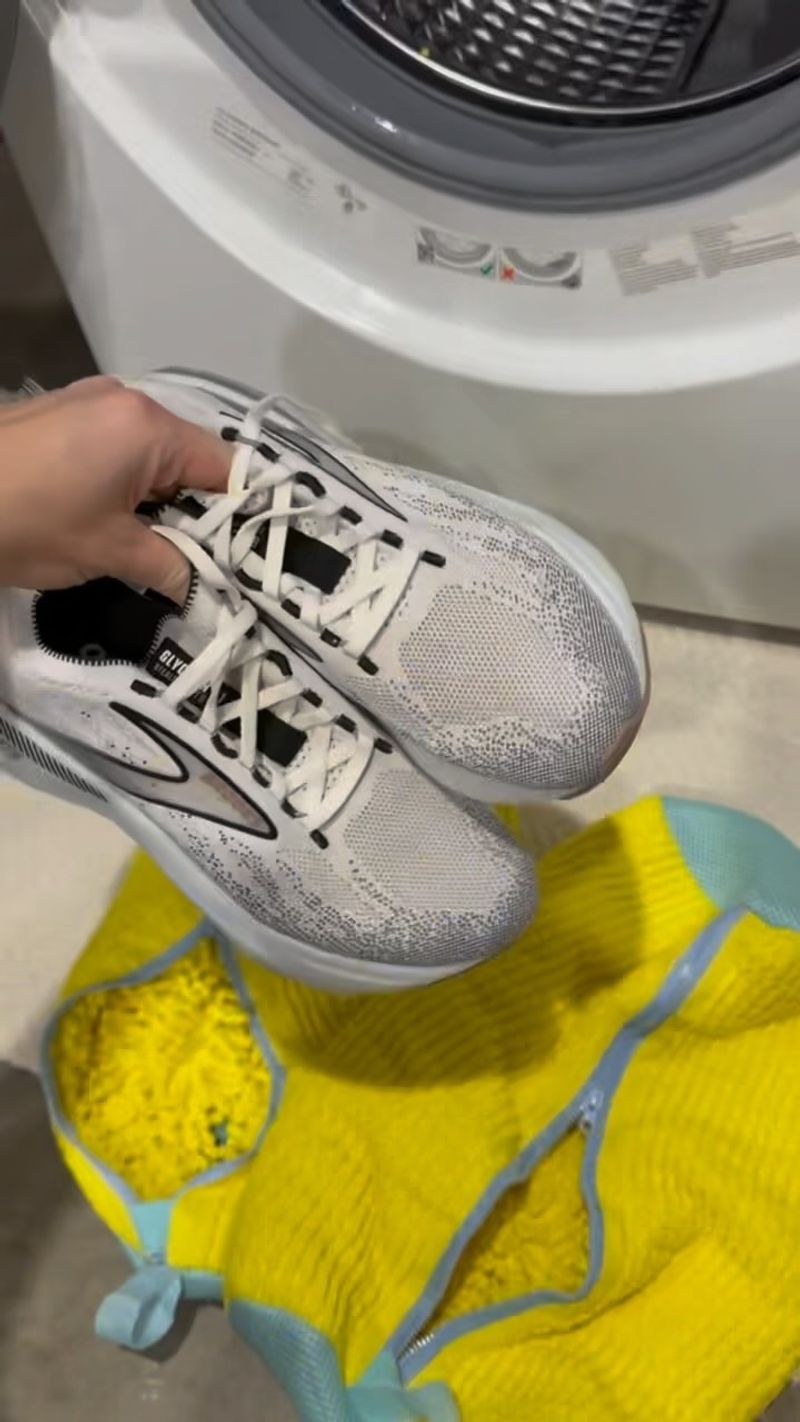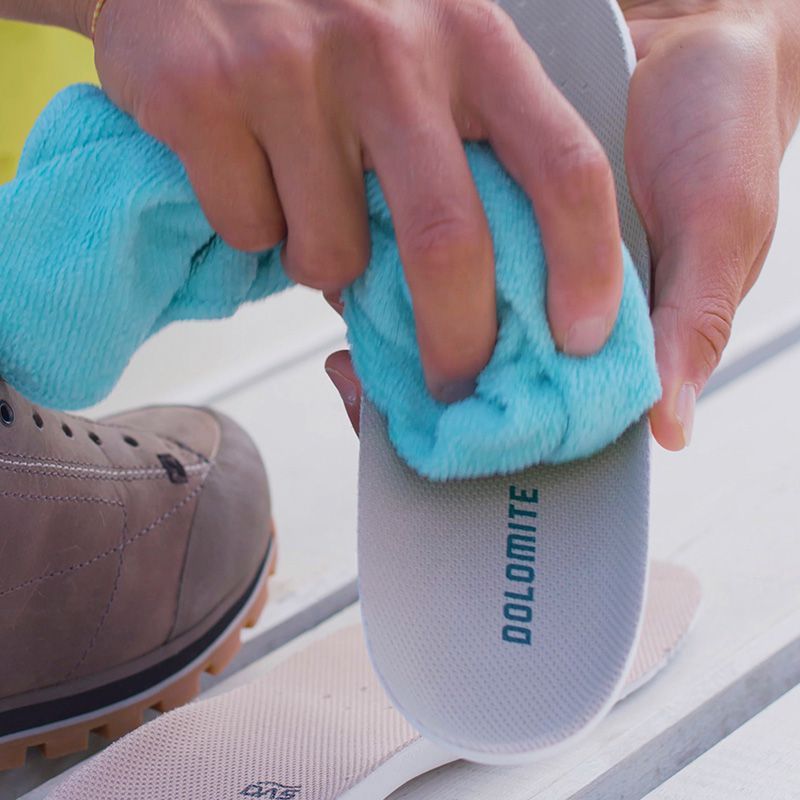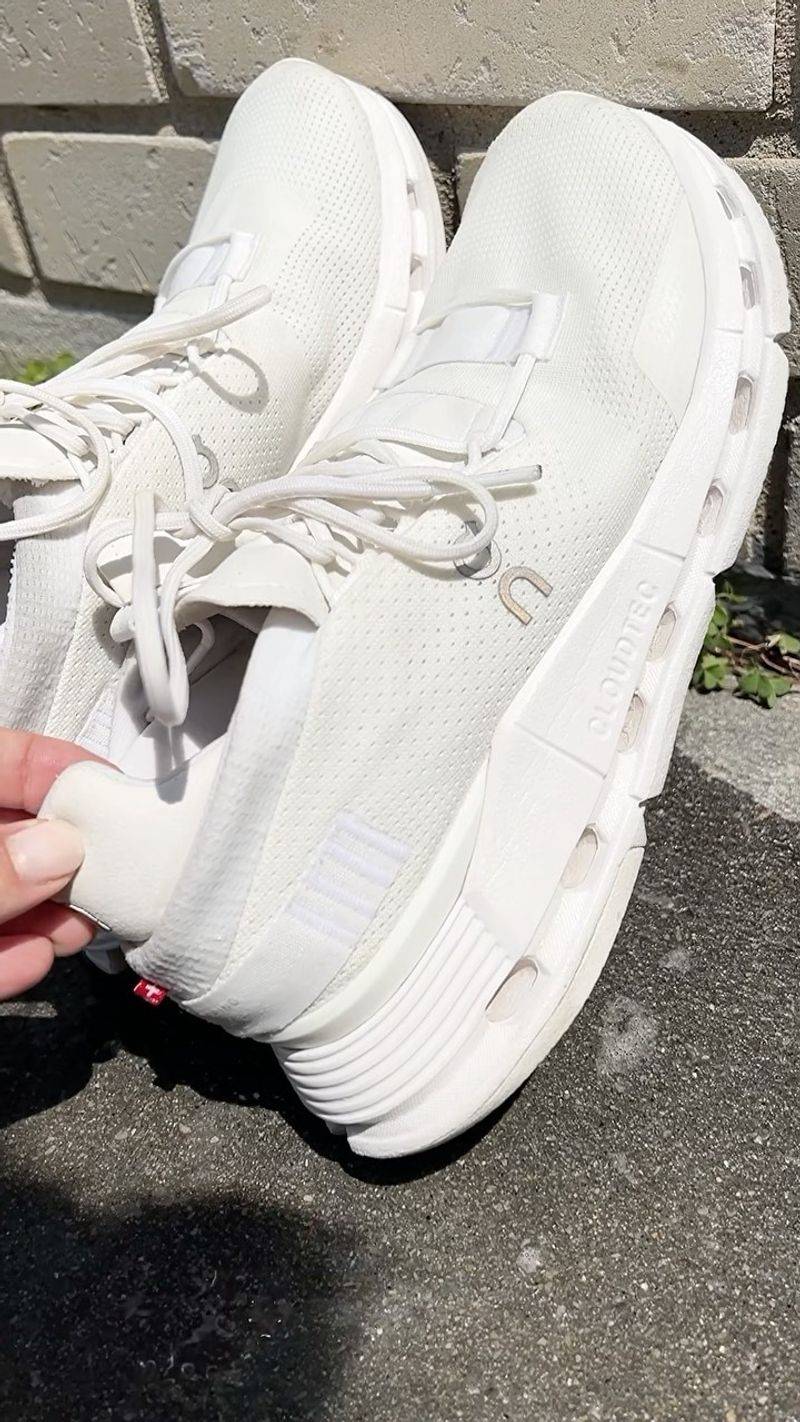14 Smart Hacks For Machine-Washing Shoes Like A Pro
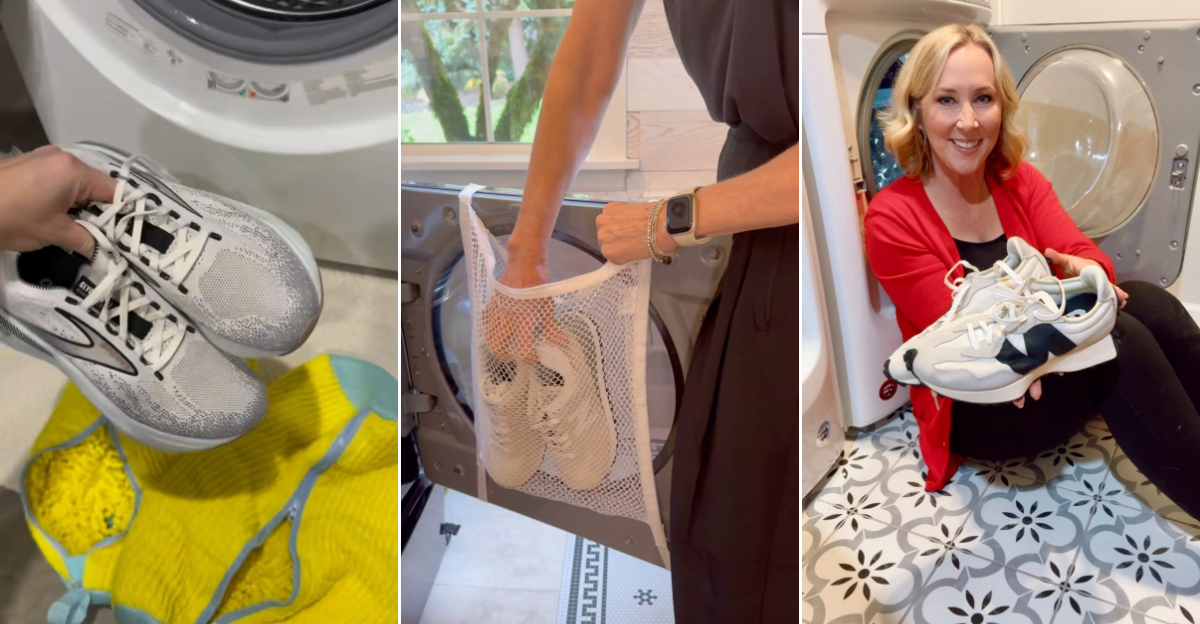
Washing shoes in your machine doesn’t have to be a gamble.
I’ve learned the hard way that tossing dirty sneakers straight into the washer can lead to damaged footwear and even washing machine problems.
After years of trial and error, I’ve gathered some foolproof methods that keep my shoes looking fresh without ruining them or my washer.
These practical hacks will transform how you clean your favorite footwear.
1. Remove Laces And Insoles First
Taking out shoelaces and insoles might seem like extra work, but this step makes a huge difference in cleaning quality. When left inside during washing, laces can tangle around shoes or get caught in the machine’s drum, potentially damaging both your footwear and washer. Insoles need special attention too. Most contain materials that break down when soaked for long periods.
I once skipped this step with my running shoes and ended up with misshapen, smelly insoles that never recovered. Wash laces separately in a small mesh garment bag or pillowcase. For insoles, hand washing with mild soap and a soft brush works best, extending the life of both your shoes and washing machine.
2. Use A Protective Mesh Bag
Mesh laundry bags are absolute lifesavers when it comes to machine-washing shoes. They act as a protective barrier, preventing your shoes from banging against the drum and potentially damaging both your footwear and washing machine. I once washed my canvas sneakers without a bag and was startled by the loud thumping sounds coming from my washer.
The shoes came out with scuff marks, and my machine needed a repair visit! Make sure to choose a sturdy mesh bag with a reliable zipper closure. If you don’t have a proper shoe washing bag, a pillowcase tied tightly at the opening works in a pinch. This simple barrier dramatically reduces noise and protects your washer’s drum from unnecessary wear.
3. Brush Off Excess Dirt First
My neighbor once tossed his muddy hiking boots straight into his washer. The result? A clogged drain and an expensive repair bill. I learned from his mistake and always take time to remove loose dirt before washing. Knock shoes together outdoors to dislodge mud clumps. For stubborn dirt in treads, an old toothbrush works wonders. I keep one specifically for this purpose near my laundry area.
This pre-cleaning step prevents drain clogs and stops abrasive dirt particles from scratching your shoes during the wash cycle. It also keeps your washing machine cleaner in the long run. For extremely muddy shoes, I sometimes rinse them quickly with cold water in the sink before they ever see the inside of my washer.
4. Spot-Treat Stubborn Stains
Last summer, my white tennis shoes picked up grass stains that regular washing couldn’t touch. That’s when I discovered the power of pre-treating stains before machine washing. For tough marks like grass, mud, or oil, apply a small amount of stain remover directly to the spot and gently work it in with an old toothbrush. Let it sit for 10-15 minutes before washing.
For white canvas shoes, a paste made from baking soda and water works wonders on scuffs and discoloration. Colored shoes need special care—always test stain removers on an inconspicuous area first. Oil-based stains respond well to dish soap, while protein stains (like blood) need enzyme cleaners. This targeted approach means your shoes come out of the wash looking truly clean, not just wet.
5. Choose The Right Detergent
Regular laundry detergent can be harsh on shoes, especially those made from delicate materials. I made this mistake with my favorite suede-trimmed sneakers and watched in horror as the color faded dramatically. Gentle, liquid detergents work best for most footwear. Skip powdered formulas which might not dissolve completely and leave residue in shoe crevices.
I’ve found that detergents labeled for delicates or woolens are perfect for most shoes. Use only a small amount—about half what you’d use for a normal load of clothes. Too much detergent creates excess suds that can penetrate shoe materials and become impossible to rinse out completely. For athletic shoes with odor issues, adding a quarter cup of white vinegar to the wash helps eliminate bacteria without damaging materials.
6. Add Towels As Cushioning
The first time I washed shoes alone in my machine, the banging sound made me think something had broken loose! Adding a few old towels creates a buffer that prevents this racket while protecting both your shoes and washer. Towels absorb impact as shoes tumble, reducing wear on machine components and preventing shoes from getting misshapen.
They also help balance the load, preventing that off-kilter spinning that can strain your washer’s motor. I prefer using light-colored, lint-free towels to avoid color transfer or lint sticking to shoes. Microfiber towels work particularly well because they’re lightweight but effective as cushioning. Just make sure not to overcrowd the machine—two or three small towels with one pair of shoes is plenty for a standard washer.
7. Select A Gentle Cycle
My running shoes took a beating when I accidentally washed them on the “heavy duty” cycle. The aggressive agitation loosened glued parts and frayed the fabric edges. Most shoes need a delicate or gentle cycle with minimal agitation. These settings use slower drum movements and shorter wash times, which protect shoe materials and construction.
The “hand wash” or “wool” settings on modern machines are perfect for most footwear. For especially delicate shoes like those with sequins or decorative elements, consider using the shortest cycle available. My vintage canvas sneakers with rubber trim stay in great shape using the “quick wash” setting, which lasts just 15 minutes. Remember that shoes don’t usually need long washing times—they’re not as absorbent as clothing and clean up relatively quickly.
8. Stick With Cold Water
Hot water might seem like the best choice for really dirty shoes, but I learned this lesson the hard way. My favorite running shoes shrank and warped after a hot water cycle, becoming unwearable overnight. Cold water is safest for almost all shoe materials. It prevents colors from bleeding, adhesives from melting, and synthetic materials from warping.
Even for white canvas shoes, cold water with the right detergent cleans effectively without risking damage. If you’re concerned about sanitizing athletic shoes, remember that most modern detergents are formulated to clean effectively in cold water. For extra germ-fighting power, look for detergents with enzymes or add a quarter cup of white vinegar to the rinse cycle. The vinegar helps eliminate odor-causing bacteria without the risks associated with hot water.
9. Skip Fabric Softeners Completely
Fabric softeners might make clothes feel cozy, but they’re terrible for shoes. I once used softener when washing my gym sneakers and couldn’t figure out why they felt slippery and retained odors afterward. These products leave a waxy coating that blocks ventilation in breathable shoe materials. For athletic footwear especially, this coating traps moisture and sweat, creating perfect conditions for odor-causing bacteria to thrive.
The residue can also make insoles slippery, affecting your stability while walking or running. Instead of softener, I add a half cup of baking soda to the wash for natural odor elimination. For shoes that need to maintain water-resistant properties, fabric softener is particularly damaging—it breaks down the protective coatings manufacturers apply to repel moisture.
10. Disable The Spin Cycle
The high-speed spinning that works so well for wringing water from clothes can seriously damage shoes. My neighbor’s expensive running shoes lost their shock absorption after a full spin cycle left the cushioning compressed and uneven. Many washing machines allow you to disable or reduce the spin cycle. Look for settings like “no spin” or “low spin” in your machine’s options.
If your washer doesn’t have these settings, simply listen for when the wash cycle ends and the spin begins, then manually stop the machine. The aggressive spinning motion can warp shoe shapes, loosen glued components, and damage decorative elements. It’s better to have slightly wetter shoes that take longer to dry than perfectly spun but damaged footwear. I’ve found that most shoes retain their structure much better when I take the extra time to skip this step.
11. Air Dry Away From Heat
The dryer is absolutely off-limits for shoes! I learned this expensive lesson when my $120 running shoes came out misshapen and with partially melted soles after just 20 minutes on low heat. Heat from dryers can warp shoes, melt adhesives, shrink materials, and damage cushioning. Even the “air fluff” setting without heat can cause physical damage from tumbling.
Instead, place freshly washed shoes in a well-ventilated area away from direct heat sources. For faster drying, remove excess water first by pressing shoes between two towels. Then place them sole-up near a fan or open window. Avoid direct sunlight, which can fade colors and break down certain materials. Most athletic shoes take 24-48 hours to dry completely this way, but the patience preserves their fit, function, and appearance for many more miles.
12. Stuff Shoes To Maintain Shape
Wet shoes can lose their shape while drying, especially if they’re made of canvas or other soft materials. My white sneakers once dried with awkward creases that never came out because I skipped this simple step. Stuffing shoes with plain white paper towels or crumpled newspaper helps them maintain their original form while absorbing moisture from the inside out.
Change the paper every few hours for the first day to speed up drying and prevent that musty smell that develops in slowly-dried shoes. Avoid colored newspaper pages as the ink might transfer to light-colored shoe interiors when wet. For expensive or structured shoes, I use cedar shoe trees instead of paper—they absorb moisture while perfectly preserving the shoe’s shape. Just make sure whatever you use fills the shoe completely, paying special attention to the toe box where creases most commonly form.
13. Clean The Washing Machine Afterward
After washing particularly dirty shoes, I noticed sand and grit in my next load of laundry. That’s when I realized shoes can leave behind residue that affects future wash loads. Run an empty cleaning cycle after washing shoes, especially if they were very dirty. Most modern washers have a self-cleaning cycle, but running a short hot water cycle with a cup of white vinegar works just as well for older models.
Wipe down the rubber gasket around the door of front-loading machines, where dirt can collect in the folds. Check and clean the filter if your machine has an accessible one—small debris from shoes often gets trapped there. This post-shoe cleaning ritual prevents dirt transfer to your clothes and extends your washing machine’s life by removing potential clogging materials from the system.
14. Treat Insoles Separately
Insoles absorb most of our foot sweat and often harbor the worst odors. The first time I washed shoes with insoles inside, they took days to dry and developed a terrible smell despite looking clean. Remove insoles and clean them separately using a different method than your shoes. Most respond well to hand washing with warm water and antibacterial soap, followed by thorough rinsing.
For stubborn odors, soak them in a solution of water and white vinegar (equal parts) for 30 minutes before washing. Allow insoles to dry completely before returning them to shoes—this might take longer than the shoes themselves. For persistent odor problems, consider replacing insoles entirely; they typically wear out faster than the shoes. Many athletic and orthopedic insoles aren’t designed to be washed repeatedly and may need replacement after 6-12 months of regular use.
15. Know Which Shoes To Never Machine Wash
My expensive leather boots were ruined after I impulsively tossed them in the washer. Not all shoes are candidates for machine washing, no matter how careful you are with settings and preparation. Avoid machine washing leather, suede, or shoes with special finishes like waterproofing. Shoes with significant glued elements often come apart in washers, as the water and agitation break down adhesives.
Designer shoes, particularly those with decorative elements like sequins or beading, should always be cleaned by hand or professionally. Structured shoes with supportive features for foot conditions need special care too—washing can break down their supportive elements. When in doubt, check the manufacturer’s care instructions. Most athletic shoes, canvas sneakers, and rubber shoes handle machine washing well, while dress shoes, leather boots, and high-end footwear generally don’t.

